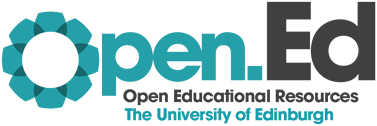Intern Reflection: ‘Words, words, words.’ (Hamlet 2.2.210)

Towards the end of my summer internship I’ve been working with a lot of words.
Whether it be process documents, or formatting guidance, or copy for educational posts, or project briefs and service templates and proformas, or tens of thousands of words of textbook content. I’ve been working with a LOT of words.
There is so much involved in the creation of a textbook, and migrating the project itself into a service. I’ve been an active part of the team in making streamlined process to assist authors in turning their content into navigable, accessible and aesthetically pleasing textbooks. This has been through sieving through hours of LinkedIn learning courses, extracting the information to create a cohesive guide, and learning the ins and outs of formatting through word processors, and Adobe InDesign, the industry standard for layout publishing and design. Having someone with no idea how to use a software creating a guide for it has its benefits too, since I am writing absolutely everything that I can think of, where a more seasoned graphic designer might assume the reader knows certain functions.
From a guide aimed towards people that definitely know a lot more than me about graphic design, I’ve also created a guide aimed towards authors that probably know a lot less than me. Which is so startling to be able to say, that I have specific experience and knowledge that enables me to be able to advise others in the editorial process. As an intern, it does definitely make me feel more confident in my abilities, to be able to speak directly to prospective authors and actually add value in my comments. The guidance I’ve been drafting will also save the graphic designers a lot of time, bridging the gap between turning raw content—which is often formatted in a way that makes it difficult to understand—into readable documents.
One of my longest tasks was proofreading and reformatting a whole textbook into a new document, since all of the body text was Heading 6 for some reason, and everything was indented, while the margins of the page were very far apart. Headings and subheadings need to be correctly marked up in the HTML to enable navigation in the table of contents, as well as distinguishing the type of text that is being read out on a screen reader. Local formatting, in the form of individually changing sizes of words rather than using in-built styles, or clicking tab for absolutely every single line, makes a document incredibly difficult to work with and turn into an EPUB, which is essentially a glorified text file. Guidance that is sent out prior to receiving the full draft can really benefit the service providers, as content will be clearer to understand from an outsider’s point of view, and the designers can focus on making everything readable and pretty.
I also learnt more about actual service provision, including the documents that need to be signed and agreed upon by both parties to launch a new project. This has been through the creation of a project brief, where I was able to help make a document to record expressions of interest (EOIs) by potential authors, where the service could clearly lay out their terms of usage, and also inquire about the subject of the potential textbook. As well as this, I’ve been working on drafting a service description with my manager, clearly highlighting the features, availability, maintenance, development and a whole bunch of other formal and legal requirements. I’ve come to understand that there is a lot of bureaucracy in providing a standardised and structured service, and that all of these frameworks need to be put in place before we can help authors create and publish their open textbooks.
A lower-stakes part of my job has been copywriting posts for open educational resources, where the University publishes high quality teaching resources on tes, providing teachers worldwide with free and accessible lesson plans and fun activities for their classes in alignment with the Scottish Curriculum for Excellence. Through my editing of the content, I’ve learnt a lot about what makes teaching resources adaptable and accessible to mixed-ability learners, and how to make the lives of teachers easier by implementing search engine optimisation (SEO) in my copy, allowing for the resources to be found more easily. Following the guidance from the University’s internal course on creating effective digital content, I have made sure that the teaching resources adhere to these guidelines, as well as having fun reading about dinosaurs and looking at pictures of cute animals.
The last day of the summer internships is Friday, 22nd of August. It is not easy to find an internship with mentors that are so welcoming and helpful, and work that you are genuinely interested in and are passionate about. In these past twelve weeks, I’ve learned so much, and I am so grateful for the people around me that have had a role to play in making sure my summer has been rewarding and enjoyable.
I would be absolutely gutted to leave behind this team and this project, which is why I am so glad that I’ll be staying on with the ISG for the upcoming semester. I’m looking forward to see how the service develops from its initial stages to a fully-fledged service, providing anyone from established academics to students, a way to create and published high-quality, openly-accessible textbooks.


